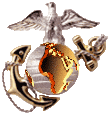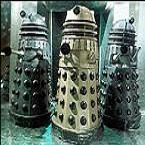panda124c
Posts: 1692
Joined: 5/23/2000
From: Houston, TX, USA
Status: offline

|
Here you go Randy
Gebirgsjager
“A standard battalion had a strength of 877 officers and men who were organized into three Jager companies, a machine gun, an anti-tank and a heavy weapons company. Each Jager company had a strength of 147 men and was equipped with twelve light machine guns and three light and two 8cm mortars as well as an anti-tank rifle. The machine gun company, with a strength of 208 men, had twelve heavy machine guns and four 12 cm mortars, while the heavy weapons company with 201 men was equipped with four light machine guns and two 7.5 cm infantry howitzers. The anti-tank company had four guns and two rifles.
Three Gebirgsjager battalions and a headquarters group made up a regiment, which had a strength of 3064 all ranks. Regimental headquarters was composed of a signals platoon and a heavy mountain howitzer battery.
Two Jager regiments and an artillery regiment, together with the usual services, made up a Gebirgs division. This formation had a strength of 13,056 officers and men. Included within the establishment were 2330 men of the artillery regiment equipped with twenty-four guns of 7.5cm calibre and twelve 7.5cm mountain howitzers, twelve 15cm howitzers and twelve 10.5 cm howitzers. These weapons were divided among the four battalions which comprised an artillery regiment in a Gebirgs division.
A signals battalion, a semi-motorised reconnaissance battalion, a motorised anti-tank gun battalion, and a battalion of semi-motorised engineers were the principal ancillary units and the train, which completed the divisional establishment, included pack animals organized usually at battalion level but which, under difficult conditions of terrain, could be formed so as to supply individual companies. Most Gebirgs divisions had a Hochgebirgs battalion of five companies and a support company with a platoon of engineers, one of signals and one of light howitzers.”
After the campaign in France during 1940, certain former infantry divisions were converted to become panzer or panzer grenadier and that their surplus regiments were reformed a Gebirgsjager and posted to Gebirgs divisions. (paraphrased)
“There were, however specialist categories of mountain men whose skills could not be learnt as a drill but were achieved through a combination of birth in an Alpine area and years of living among and climbing the high mountain peaks, These men formed the Hochgebirgs companies and battalions and most of them were also qualified mountain guides. It was the task of these individual soldiers to blaze trails and they were usually formed into a Hochgebirgs detachment for that purpose. On other occasions their companies would lead assaults, particularly in the higher Alpine altitudes.”
All quotes taken from "Alpine Elite German Mountain Troops of World War II"
By: James Lucas (1st Battalion, the Queen’s Own Royal West Kent Regiment, during the North African campain and with the Queen’s Royal West Surrey Regiment in Italy, now Deputy Head of the Department of Photographs ate the Imperial War Museum)
Copyright 1980 Cooper and Lucas Limited
First published in the United Kingdom in 1980 by Jane’s Publishing Company Limited
Published in the United States of America in 1980 by Jane’s Publishing Incorporated
This is a very interesting book.
_____________________________
|
 Printable Version
Printable Version












 New Messages
New Messages No New Messages
No New Messages Hot Topic w/ New Messages
Hot Topic w/ New Messages Hot Topic w/o New Messages
Hot Topic w/o New Messages Locked w/ New Messages
Locked w/ New Messages Locked w/o New Messages
Locked w/o New Messages Post New Thread
Post New Thread